#Lenni Lenape
Text
Unlocked Book of the Month: History, Manners, and Customs of the Indian Nations Who Once Inhabited Pennsylvania and the Neighbouring States
Each month we’re highlighting a book available through PSU Press Unlocked, an open access initiative featuring scholarly digital books and journals in the humanities and social sciences.

About our February pick:
First published by the Historical Society of Pennsylvania in 1818, History, Manners, and Customs of the Indian Nations provides an account of the Lenni Lenape and other tribes in the mid-Atlantic region, looking at their history and relations with other tribes and settlers, as well as their spiritual beliefs, government and politics, education, language, social institutions, dress, food, and other customs. The text, written by the Reverend John Heckewelder, a Moravian missionary based in Ohio and Bethlehem, Pennsylvania, includes the author’s observations, anecdotes, and advice, preserving not only his knowledge about the Indian nations in the eighteenth century but also his perspective, as a missionary and settler, on Native Americans and the often-fraught relationships between the tribes and European settlers. This version of the text, published in 1876, contains an introduction and notes by the Reverend William C. Reichel as well as a glossary of Lenape words and phrases and letters between the author and the then-president of the American Philosophical Society concerning the study of the Indian nations and their languages.
Read more & access the book here: https://www.psupress.org/books/titles/978-0-271-06701-8.html
See the full list of Unlocked titles here: https://www.psupress.org/unlocked/unlocked_gallery.html
#Pennsylvania#Pennsylvania History#PA History#Lenni Lenape#Indian#Native American#Mid-Atlantic#Atlantic#Moravian#John Heckewelder#Ohio#Eighteenth Century#Nineteenth Century#Lenape#American Philosophical Society#PSU Press#PSU Press Unlocked
2 notes
·
View notes
Text
On the Lenape Trail
Along the Lenape Trail in New Jersey and some state, geographic and personal history.
#NJ #lenape #trails
I was on one of my walks on the local Lenape Trail. It’s not hardcore hiking. Chunks of it don’t even run through woods as you would expect of a trail. I was looking at a map of the trail and realized that many parts of my own childhood and the childhood days of my sons are on that trail.
The trail crosses Essex County, N.J., one of the most congested counties in the United States. It connects…

View On WordPress
0 notes
Text
LENOIR PRESERVE
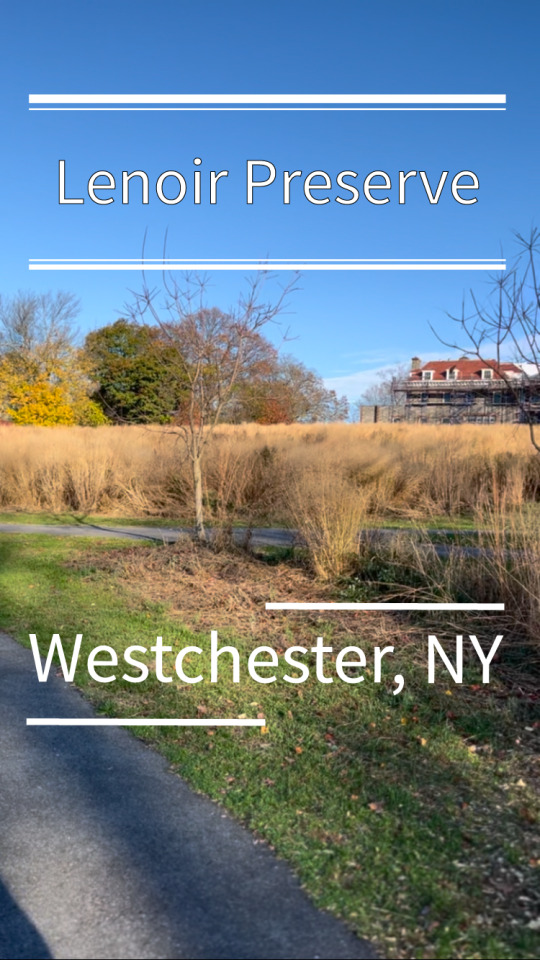

Sometimes its really fun for me to introduce my boyfriend, Rob, who grew up in the area, to places in Westchester that he didn’t know existed previously. Lenoir Preserve is one of those places and I DO think passing by it in the car and saying “what was that?”, him shrugging and me saying “let’s check it out” absolutely counts.
💰 : FREE
⏰ : open dawn to dusk, 365 days a year
🌎 : 19 Dudley St, Yonkers, Westchester
♿️ : ADA accessible and handicap specific spots
🏃♀️: please see link in bio for trail recommendations and intensities
🐶: service animals only, no pets
🚗 : parking lot on North Broadway by the mansion, parking lot on Dudley Street (off N. Broadway), by the Nature Center
📸 : moderate Instagramability, depending on your willingness to “break rules”
📍: Weckquaesgeek, Wappinger, Lenni Lenape ancestral home
The most recent time I came here with Rob, after I had decided to make this account, I looked at him as we were walking through the park and said “I don’t know how to sell this place when Untermyer is right down the road.”
I still don’t really know how to sell it if you’re comparing it to Untermyer. Like, how do I convince someone who’s driving to the area to go here instead of Untermyer? The only mind-blowingly unique part about Lenoir Preserve is that Rob and I have seen a bald eagle there twice now.

Lenoir Preserve has a few dedicated paths, one of which is very easy and nicely paved, one mansion that’s on the property (and under restoration currently) and a second mansion (that’s under restoration) with beautiful and dilapidated gardens that’s not.. quite… ON…. The property…., (more about that to come next) and is a really spectacular place to see some great birds, year round. Lenoir also has a dedicated butterfly garden, but that’s only really worth the visit in the summer months. As a park that has access to the Old Croton Aqueduct, it obviously also has fantastic views of the Hudson River and the Palisades across the way.
BUT, it has none of the grandeur or maintained, manicured gardens of Untermyer.

The sell for Lenoir Preserve, that I’ve been able to come up with is the following:
Untermyer draws a lot of tourists and a lot of people taking professional photos and a lot of people taking pictures for their Instagrams, and Lenoir is not like that and sometimes that is SO REFRESHING.
Lenoir has really nice and well-maintained trails, that run the gamut of intensity from beginner to moderate
At least one bald eagle most definitely lives there, and I’m sorry, you don’t get how cool they are until you see them in person.
The bird feeders. We all know I’m a boring old person who loves me some birds but that’s a draw for me and if it’s not for you too, I don’t care. Let me love my birds, okay?
Lenoir Preserve is insanely steeped in history but really it’s the nature that makes this park so awesome. Every park is special because nature should be cherished and preserved every chance we can get. Lenoir wouldn’t be so spectacular if you weren’t able to “smresspass” onto the Alder Manor garden ruins, or if there weren’t freaking bald eagles and what feels like millions of woodpeckers, or it’s peacefulness compared to Untermyer, or its access to the Old Croton Aqueduct Trail, HOWEVER, Lenoir HAS all of those things, so it is 100000% as worth your time as its better known sibling down the road from it.
HISTORY:
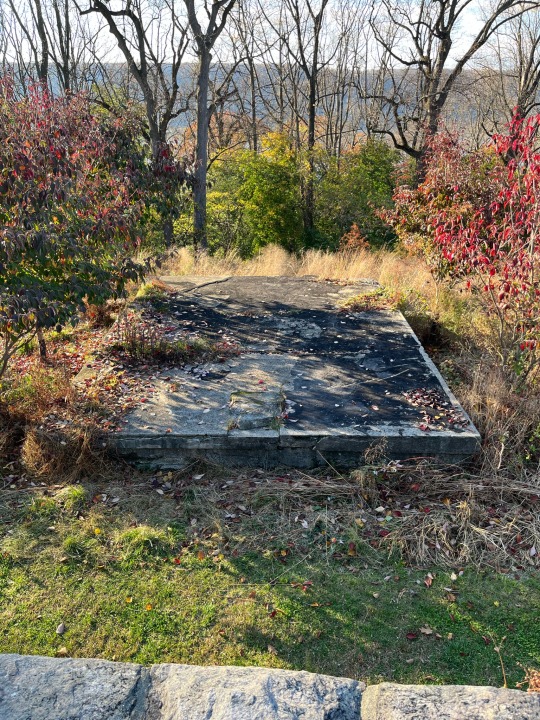
Lenoir, as a piece of land, has an interesting history dating back to before the colonization of North America. The land was most likely originally home to the Weckquaesgeek, who were a part of the larger Wappinger tribe who generally lived in the Yonkers area. The informational plaques at Lenoir Preserve indicate that the land was originally inhabited by the Lenni Lenape tribe (translates to “true people”) and they called the area “Keskeskick”, which isn’t necessarily wrong as the Lenni Lenape is a broad name for any native who lived between essentially the Hudson Valley down to the area around modern-day Philadelphia.
I don’t know the exact details, I’m sure they involved trickery, violence or misunderstandings, so I’ll put it in the nice way of saying, the Lenni Lenape were “pushed” out of the area in the 1600s and eventually a man named Frederick Philipse III, whose family had acquired the land two generations prior, then owned the property of what is now known as Lenoir Preserve.
Frederick Philipse III was a loyalist and in 1776, he signed the “Declaration of Dependence”, pledging his loyalty to the King of England. And, I imagine if you have stumbled upon my blog and are from the New York area or even just have even a rudimentary knowledge of U.S. colonial history, you would understand that 1776 is when everyone was like, “fuck the King and fuck England.”…..
So, I think you can probably guess how things went for Mr. Philipse III since we, inhabitants of the future, know who won the American Revolutionary War…
As happened to many Loyalists in the Westchester area, Frederick Philipse III had his land and home stripped from him and it was sold off to two different families. In theory, according to the Lenoir historians, you can still see some of the ruins of the earliest stone homes built by the Philipse family and by the people who gained his property after him. I’ll admit though, I haven’t found those ruins yet as far as I’m aware.
Let me know if you do.
The mansion that sits on the property of Lenoir Preserve has been around since at least 1836, or at least that’s the first time it appears on any written record. It changed hands many times until Caleb C. Dula, a native of Lenoir, North Carolina, who amassed his wealth in the cigarette industry, bought the property in 1906. He named the mansion and property “Lenoir” after his hometown.
In 1939, the Lenoir property was inherited by Mr. Dula’s niece, Mrs. Purl Wightman, who renamed the mansion after her husband’s surname but allowed the property as a whole to retain its Lenoir identity. As goes everything in New York, it seems, real estate developers caught wind of an eventually empty estate and attempted to demolish the history and create apartments or a country club.
Thankfully, the city of Yonkers and Westchester County decided to intervene and bought the property instead, allowing it to be turned into a nature refuge and museum. The interiors of the mansion have also since been used as the setting for TV shows like The Knick and The Following.
TRAIL RECOMMENDATIONS:
My preferred trek (very beginner intensity): I advise parking in the lot located off Dudley Street. From there look for the trailhead sign for the Copper Beech Trail (0.2mi) straight from the parking lot (if you hit the Nature Center, you’ve missed the trailhead, turn around, it should be on your right if your back is facing the Nature Center). Take the Copper Beech Trail to the Meadow Loop paved path, which does in fact loop all the way back to the Dudley Street parking lot.
IF you are feeling a little dangerous, perhaps you might partake in some light adventuring (AKA a word that rhymes with smresspassing… I deny EVERYTHING!) into/over/around/through the brick wall that denotes the property line between Lenoir Preserve and the old Alder Manor estate property.

There ARE cameras so “smresspass” with caution… I feel like as long as you don’t vandalize anything, who cares if you take a little peek… right????
No?
Okay, well anyway….
Don’t forget to keep your eyes to the skies throughout your stroll, as this preserve is very well known to be frequented by red-tailed hawks and AT LEAST one bald eagle, and also like a million woodpeckers.
An important stop for Rob and I, or really just me, before we head back to the car is the bird feeders outside of the Nature Center, which is where Rob and I first spotted the bald eagle actually. He wasn’t eating bird seed… but we were sitting there and he flew over, and Rob saw him first, which I think he would want me to mention.
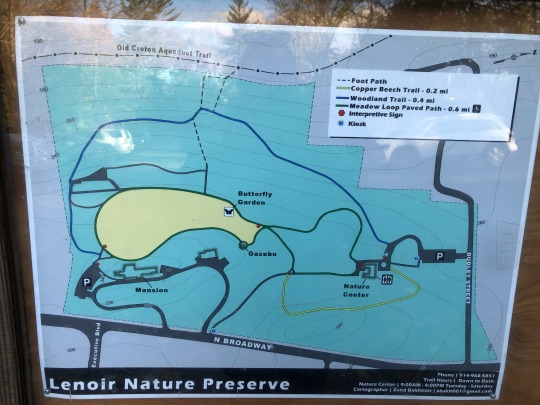
MEADOW LOOP TRAIL: The Meadow Loop Trail is easily accessible from both parking lots and is paved in its entirety making it beginner and ADA friendly.
WOODLAND TRAIL (0.4 mi): it’s a quarter of a mile, Cat, how bad could it be? Like I’ve said before, Rob and I are what you’d call “lazy active” people and this trail is STEEP… like REALLY REALLY STEEP. I was huffing and puffing and my old lady knees were HURTING by the time we got back up to the top. HOWEVER, if you’d like to partake in some of the Old Croton Aqueduct Trail or even walk down to Untermyer, that can be achieved by taking the Woodland Trail and going south (left, if you’re looking at the Hudson).
COPPER BEECH TRAIL (0.2mi): a wooded walk with very mediocre “elevation gain”. Also the place I suspect the eagle has his nest.
Lenoir does not necessarily make my "Run, Don't Walk" list. But that doesn't mean I don't love it and think it's worth a check out.
#lenoir preserve#aldermanor#alder manor#lenoirpreserve#westchesterny#westchester#westchester ny#westchester county#yonkers#yonkers ny#yonkersny#parks#bald eagle#butterfly garden#hudson valley#lenni lenape#cathikesny#new york from a new yorker#newyork#new york#park#preserve#wildlife#birders#birding#bird
1 note
·
View note
Text




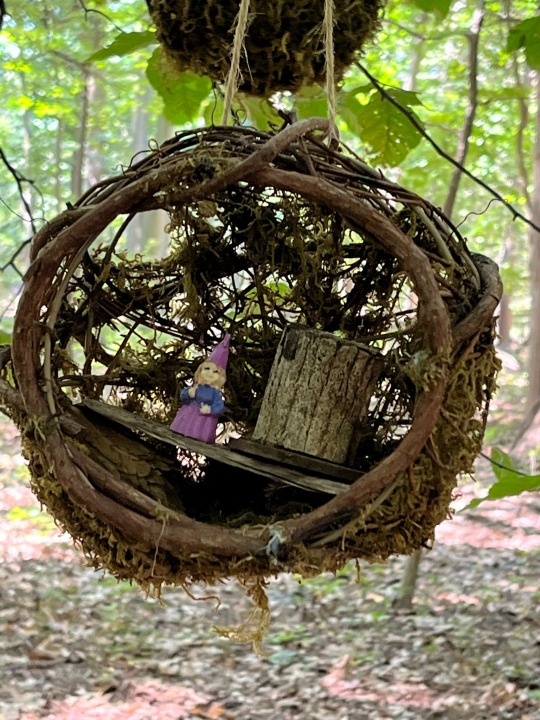


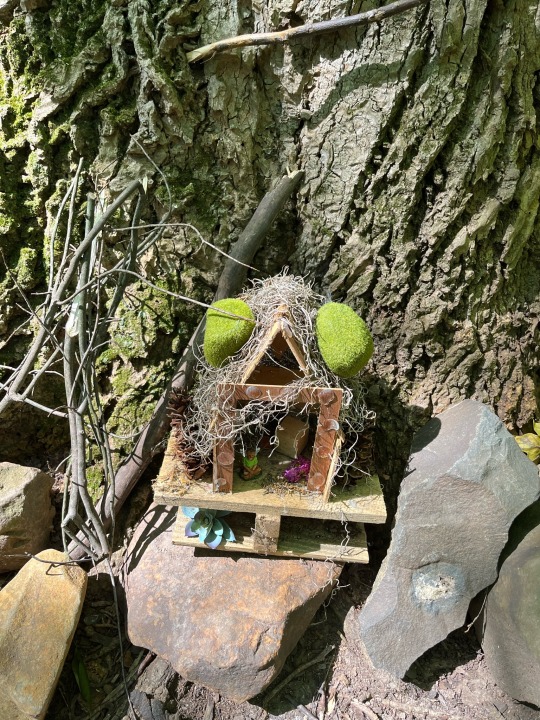

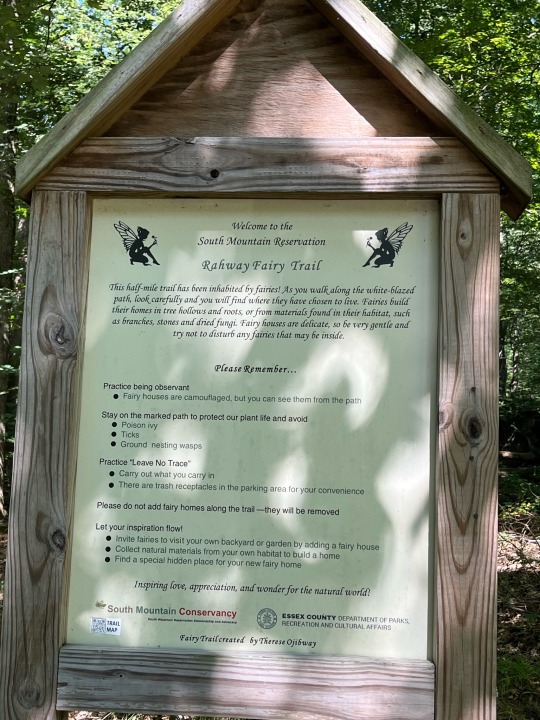
I wish I could show you *all* the Fairy Houses I saw today at the Rahway Fairy Trail at the South Mountain Reservation in Millburn, NJ. This is about 20% of them. Highly recommend you check it out. ZOOM IN. 🏡🧚🏻♀️🧚🏼🐲🦄🧌✨☀️🌙🌟💫⭐️
PART OF ANCIENT LENNI LENAPE NATIVE LANDS.
#fairy aesthetic#fairycore#fairy cottage#fairy tree#fairy trail#fairy house#fairy art#fairy forest#you’re gonna want to zoom in#fairy magic#fairy dust#fairy glitter#lenni lenape lands#native peoples lands
6 notes
·
View notes
Text
youtube
Hanna Freeman bean The Lenni-Lenape people are indigenous to the Delaware Valley . The Lenni-Lenape people lived along the coast of Delaware; they also lived in parts of New Jersey , Pennsylvania and parts of New York . Hanna Freeman Lived from 1730 - 1802 . Hanna was a Lenni-Lenape woman who traveled the Brandywine River Valley . Hanna was a basket weaver , she worked in agriculture , traditional healing and she looked after children . Most of Hannas tribe fled westward but she and her family stayed behind, living among Quaker and European settlers. When Hanna Passed away she was known as the last Delaware Indian of Chester County Pa . The seeds called Hanna Freeman Bean were preserved by a man who owned the land Hanna lived on . These seeds are important Heirloom seed not only for Biodiversity but to also preserve Native American tradition , to connect to the past people of this land and to preserve the seed for the next generations to come . The Hanna Freeman bean is a pole bean with long pods , some pods are green with pinkish spots . This bean can easily grow 6 feet tall . Pods and be eaten young as snap beans or left to dry on stalks to be used in soups later on . Grow beans after all danger of frost when soil warms. You can try growing pole beans the traditional Native American way paired with Corn and Squash . This way of companion planting will help all the plants grow better together. Beans are Legumes and fix atmospheric nitrogen back into the soil making the soil more fertile . Link to order seed Hannah Freeman Bean – Truelove Seeds https://trueloveseeds.com/products/ha... Links Hannah Freeman - Wikipedia https://en.wikipedia.org/wiki/Hannah_... Lenape - Wikipedia https://en.wikipedia.org/wiki/Lenape
#native american#garden#beans#plants#biodiversity#indigenous#native plants#indigenous history#Native American Plants#native american food#history#culture#native american culture#Lenni-Lenape#Lenape#PA#pennslyvania#delaware#new jeresy#new york#Delaware Valley#coast of Delaware#Brandywine River Valley#native American women#east coast#nature#gardning#three sisters#Three sisters gardening#companion planting
0 notes
Text

Here’s to Old Gods of Appalachia for being the first rpg/fantasy I’ve ever seen do this???? Based
Text: ‘Land Acknowledgment
We would like to acknowledge the many Indigenous peoples who are the original inhabitants of the lands in which this game is set, including the nations of Eriechronon (Erie), Haudenosaunee (Iroqouis/Six Nation), Iswa (Catawba), Kanien kehá:ka (Mohawk), Lenni Lenape (Delaware), Onödowá ga: (Seneca), S'atsoyaha (Yuchi), Shawandasse Tula (Shawanwaki/Shawnee), Susquehannock (Conestoga), Tsalaguwetiyi (Cherokee/East), Wyandot (Huron), and others. We pay our respects to those true stewards of these hills and hollers who left their mark on this land before it was taken from them.
For additional information, visit the Native Land website and app at https://native-land.ca/‘
116 notes
·
View notes
Text


Samantha Black Crow is canonically Cherokee.
Sasappis is canonically Lenni-Lenape.
#indigenous character tournament#ict round 1#tournament poll#american gods#samantha black crow#cbs ghosts#sasappis
54 notes
·
View notes
Note
may I request NY angst :)
👁️👁️
*🩴*
cackles
Your wish is my command
New York when he was New Amsterdam was definitely left alone a lot as a child. Had to fend for himself a lot, which is why when the British took over he really did not want to fight for the dutch because of this. However being handed over to Britain really did a number on him because
a) he honestly thought that the Dutch Empire would at least fight for him to show that he at least cared. (he did not)
b) his mother (Lenni Lenape) and sister (New Netherlands) was killed by Britain
c) His half brother (New Sweden: now Delaware), and brothers (New Jersey) were separated from him.
-All of this lead to a fear of abandonment and not being good enough to the point one can easily discard him (ex: The dutch gave up Ny for an island of nutmeg)
-Then the Dutch yoinked him back, renamed him New Orange for a bit, and then was yoinked back by the British. (making New York think the British were better than the Dutch because at least they quickly got him back and cared. Oh boy he could not be more wrong)
Anyways!
Under the control of Britain, he was treated as the prize colony and was forced into perfection. His undiagnosed autism made everything worse as well. Even then he was really manipulated into thinking the harder he worked the safer he would be. This mindset caused him to become distant with the others.
Britain often treated him a bit better than the others just to make sure that NY wouldn't try anything.
Then his wings came in and tail. (there was an unofficial official flag for a regiment in ny with a bald eagle on it. There was also a flag flown by ships with a beaver).
This made Britain even more obsessed with NY causing NY to go to dangerous extremes just to try to fit this impossible mold Britain set up.
Now moving on to the revolutionary war.
York was very much against the thought of going against Britain because of how “well” he was treated. Mmm yes manipulation. But this view of Britain being amazing was shattered during the Quartering act of 1765 cause New York did not agree to this which led to the New York Restraining act. This started to chip away at the thought Britain was a saint and made New York question why he was trying so hard to prove himself. Even then it took a large amount of convincing by the others to get New York to revolt. When they did though, shit went down.
The Battle of Long Island saw the complete and utter failure of the continental army, causing New York City to fall under British occupation.
New York was captured during this and uh.. Britain did not take kindly to his prized colony revolting. Martial Law was set in the city after a fire burned much of it, causing New York to feel nothing but a burning sensation of the fire. Martial Law also allowed Britain to control and manipulate New York more, causing his memories to become fuzzy and to always agree with Britain. York was manipulated into thinking that the punishment he was receiving was justified, that he needed to atone for his mistakes, that Britain would “fix him”.
All of this caused him to have eating disorders, insomnia, and survivor's guilt.
At the end of the war York was just a husk of what he was. Still under Martial Law, he could hardly feel anything.
Then the end of the war came. Britain knew he had to give up New York and he was enraged by this. So of course New York was hurt immensely before his release.
York had wings.. He had wings.
Before Britain released him, Britain chopped them off in a hissy fit. York almost died then.
So when he was returned he hardly felt any joy in being release because the other were free... he was not, he would be stuck on the ground his entire life. Have memory issues for a long time, ptsd, and survivors guilt. Have trouble eating and sleeping from the trauma, and hardly trust anyone because the others said he'd be safe during the war. He was not. He was scarred.
I think ill end here. :]
#wttt#welcome to the table#wttsh#welcome to the statehouse#wttt new york#wttsh new york#Manchineel Rambles#mmm angst#New York is my little blorbo#so he get hurt
17 notes
·
View notes
Text

Jess X Snow
Jess X. Snow (b. 1992) is a non-binary film director, artist, pushcart-nominated poet, children’s book author and community arts educator who creates speculative, queer asian immigrant stories that transcend borders, binaries and time. From Calgary, Canada, by the way of Jiangxi, China, they currently live on the unceded lands of the Lenni Lenape / Brooklyn, NY. Through narrative film, large-scale murals, virtual and augmented reality, and community art education, they are working toward a future where migrant and BIPOC folks may witness themselves heroic on the big screen and city walls & discover in their own bodies; a sanctuary for healing and collective liberation.
#refugee#Jess X Snow#migration#cartoon#free gaza#free palestine#news#updates#art#vintage#Black and White#quotes#inspirational quotes#life quotes#Rachel#corrie#gif
4 notes
·
View notes
Note
I know it's not easy sometimes, but legitimately, I appreciate you being so assertive about your identity. Any part of it, but today, in particular, I'm grateful for the way you talk about being Mi'kmaw. Had an Unpleasant conversation about being Lenni-Lenape at work today and probably stuck up for myself much more than I would have before I encountered you.
*Hugs*
44 notes
·
View notes
Text
Lenoir Preserve and Native American Heritage Month
As Thanksgiving is tomorrow, and more importantly, November is “Native American Heritage Month”, I wanted to make this post today.
This will not be my main post about Lenoir Preserve but this is an important update for this page going forward.
Research about social media states that being authentic and showing your genuine personality are two ways to gain followers. Nowadays, though, bringing up things that could potentially trigger claims of “politics” or leaning one way or another can make an “influencer” lose a broader audience. (I hope I'm never considered an influencer...)
With that being said, being authentic is much more important to me than gaining a “broad audience” or getting the most followers possible. My authenticity lies in my passion for the intersection of accurate history, social justice, and the recognition of personal privilege. Being a white woman, from a relatively middle class background, is my form of privilege and having this platform, however big or small it may get, means I need to use it to lift up voices that are not as often heard.
November is “Native American Heritage Month” and I would like to make a pledge that was inspired by a favorite IG of mine, @thruhikers; that pledge being: I endeavor to research and recognize and uplift the plight of the tribes who’s ancestral homes we stole and colonized and pushed them out of on land where these parks that I post about reside on.
I decided to use Lenoir Preserve as the jumping off point for this pledge because they have done the bare minimum as a park to include some Native American history as it is related to the Preserve. They broadly explain that the land was originally occupied by the Lenni Lenape, which they defined as “true people” and that at some point in time they no longer lived there.
It was an attempt at acknowledgement, I suppose.

There are no remnants of the Lenni Lenape that one could casually find on a walk around Lenoir Preserve, which is a travesty and is the result of centuries of colonization by the Dutch and the English and later just urbanization of modern New Yorkers.
I’m going to do my best to at the very least on IG, give you the name of the people who’s ancestral home you’d be visiting, and here on tumblr, I will always do my absolute best “former history major research attempt” to give you more information if you’d like to educate yourself about the people who lived here for thousands of years before us and treated this land with such respect and reverence.
It feels impossible to me to be able to post about these wonderful parks, refuges, preserves, whatever, and then to just completely ignore that everywhere I post about is stolen land.
I have no interest in having followers who reject history regarding Native Americans or who think that they are somehow more entitled to the United States than people who are immigrating here now.
ALL AMERICANS are immigrants, except those who were here before the Europeans came.
I can EASILY trace my family coming here from Ireland in the 1700s and Germany in the 1800s. I come from a family of immigrants.
The Lenni Lenape people emigrated to North America when mastodons were still alive, so this is their land, and the least I can do is give them that recognition.
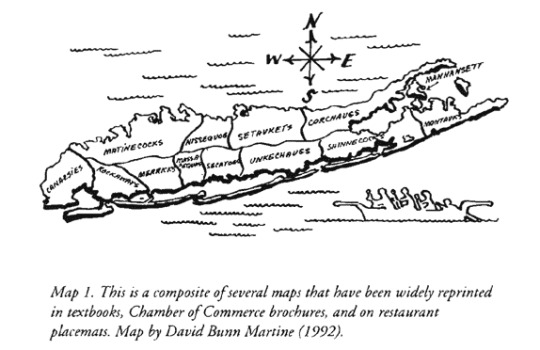
ESPECIALLY THE DAY BEFORE AMERICAN THANKSGIVING… with its bastardized version of history where the Indigenous populations and the colonizers had a wonderful dinner and meeting of the minds, instead of the truth of the Native Americans teaching the colonizers how to properly farm the new land and how to hunt and forage and not die in North America, only to be then met with accidental and purposeful murder through diseases and then just erasure through forced migration or assimilation.
I don’t have strong feelings about this at all OBVIOUSLY….
Recognizing the Native Americans who lived where I now live and visit is the least I can and will do, and if you don’t want to read about it on occasion, there are plenty of other places to get information about parks in New York State.
Please watch this space for a true post about Lenoir Preserve coming this weekend and thanks for reading this far if you did!
credit for the map of the "13 tribes" of Long Island goes to a young man named Jeremy Dennis, who is a member of the Shinnecock nation out on the East End of Long Island who is trying to preserve Native history on Long Island with his incredible website which you can see more about here!
credit for the list of translations goes to Westchester Magazine who did a really incredible breakdown of Native history in the Hudson Valley that you can read here!
#long island#long island ny#new york#liny#cathikesny#longislandny#newyork#longisland#parks#native american#lenoir preserve#hudson valley#westchester#westchesterny#native american heritage month#Lenni Lenape
0 notes
Note
Hi! I just binge read all of bicycle boy and I'm fucking hooked i love it so much but i have a huge question.....How do you pronounce Machk?
I love to learn about languages so I have done a lot of research to find the answer, but...I am still not sure! I confess I chose this name from a random list when I was a teenager. There’s a lot of misinformation around Native American names, so if anybody knows this better, or if I make any mistakes, please let me know.
Machk is part native, and I wanted his name to reflect that. Initially I thought the name was Algonquin but later learned that’s a misattribution, and it is actually a Lenape word part of the Algonquian language family. For those who don’t know, “Algonquian” is commonly mistaken to be a single tribe, and while there is one in Canada called the Algonquin/Algonkin, Algonquian is the name for dozens of tribes that speak related languages.
Now back to Machk. Machk (or Mauch) seems to only appear in this spelling in books written by settlers (1) (2) about the Lenape language, so its accuracy comes into question. The name also comes up in a bunch of places in Pennsylvania, where we find a mountain ridge, creek, reservoir, lake, switchback railway, and park all named Mauch Chunk (bear mountain). This leads me to believe that Machk/Mauch is an anglicisation of the Lenape word Màxkw [click to hear pronunciation], which means bear. It sounds a bit like ma-hwuh.
There is a character in the Canadian historical drama show Frontier named Machk, and I watched it purely to see how they said his name. For research! (For those interested: it’s on netflix & the first two seasons were p good, but it drops the ball on the third). The natives in Frontier are Cree, and the Cree language is in the same family as Lenape. I can’t find a clip online but they said it softly, like Mashk, and outsiders said Mok with a hard K. This is just a TV show, so I don’t know its accuracy.
I decided to go with the Cree pronunciation, it’s the easiest to say. All these years I’ve really butchered it though. I read it like Ma-chi-kuh.
Indian Local Names by Stephen Gill, 1885
Words, Phrases, and Short Dialogues, in the Language of the Lenni Lenape, or Delaware Indians by Rev. John Heckewelder, 1819
Note: I don’t advocate for the wording used by those idiot 19th century settlers, but the names of the books are here for archival purposes.
20 notes
·
View notes
Text


The Curse of Billy Penn
Did any of our followers know that there is a statue of William Penn on top of Philadelphia's City Hall?
We recently picked up a few new (to us) copies of Scientific American, a science and technology journal, from a local library (shout out to The Union League!). One issue features the statue of William Penn, founder of Pennsylvania (though it is important to note that Philadelphia specifically is the ancestral home of the Lenni Lenape or Lennapehoking people), before it was placed on top of Philadelphia City Hall.

William Penn was the product of Alexander Milne Calder, a Scottish-American sculptor, and is 37 feet tall.
For almost 90 years there was an unwritten agreement or understanding that forbade any building in the city from rising above William Penn. This agreement ended when Liberty Place was approved and built in 1987 causing the Curse of Billy Penn to cause disaster on all Philadelphia sports-teams. Pre-1987 Philadelphia sports teams enjoyed a run of success. Post-1987, the curse held on to the city so tightly until the Philadelphia Phillies won the World Series in 2008.
How did the curse end? Well it did and then didn't. The Comcast Center was built in 2007 and a few iron workers decided to place a tiny statue (about 4 inches tall) on top to make William Penn, yet again, the tallest figure in the city. The Philadelphia Phillies won the World Series in 2008, breaking the curse.
Then! In 2017, a new building became the tallest building in Philly. A second Comcast Center. Once again, iron workers placed a tiny Billy Penn on top... the Philadelphia Eagle went on to absolutely crush the New England Patriots in the 2018 Super Bowl. Go birds!

Photo credit: Höber, R. “Postcard from R. Höber to Georg Bredig,” April 23, 1935. Papers of Georg and Max Bredig, Box 1, Folder 59. Science History Institute.
#philadelphia#philadelphia history#philadelphia eagles#william penn#curse of billy penn#scientific american#sculpture#history#science history#local history#go birds#eagles#digital collections#libraries#libraries of tumblr#special collections#journal collection#alexander milne calder#othmer library#scientific illustration#othmeralia
23 notes
·
View notes
Video
youtube
These Are Not Costumes: Nanticoke Lenni-Lenape Regalia - Movers & Makers...
1 note
·
View note
Text

menispermum canadense, commonly known as yellow parilla or common moonseed, has historically been used by the cherokee and lenni lenape, and within the current culturally generalized knowledge base of botanical medicines, as a laxative and to treat skin ailments. its efficacy as a muscle relaxant also attracted its application to poison arrows. the presence of acutumine in the plant lends it significance to cancer research, as it can kill certain leukocytes in humans, potentially useful for the treatment of leukemia. the halogenated structure of acutumine, formed from chlorine, is novel for a plant to be able to synthesize, and indicates that it must contain some enzyme, namely halogenase, that allows this to occur. by isolating the gene responsible for this enzyme and accordingly understanding the process by which acutumine is biosynthesized, it is possible to engineer novel enzymes, dispatched in a more efficiently targeted halogenation of basic compounds for pharmaceutical purposes.
3 notes
·
View notes
Text
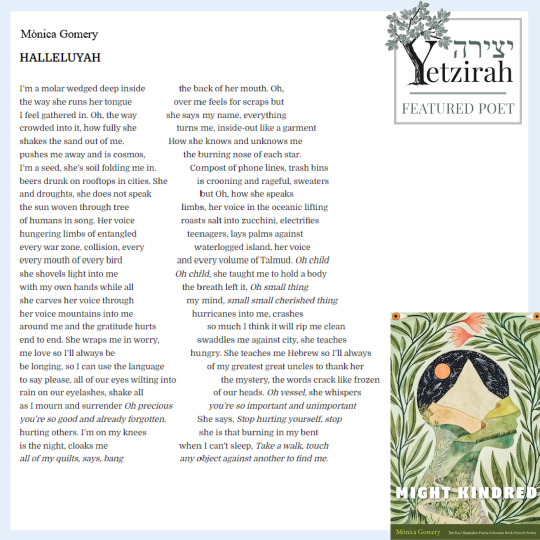
Pesach begins tonight.
Every year, this time, when the moon and planets spin 'round in this specific alignment, I reflect on escape and exodus.
Yes. My ancestors fleeing bondage.
And yes, my own obvious bondage in domestic violent cycles.
And yes, all the other enslavement-mindsets, the conditioning by society and self. I focus on what I need to unbind in my life, my heart, my journey.
This poem, from Mónica Gomery - "Might Kindred" - Hilesh Patel, reminds me that seas will part once we decide to leave bondage. The following is from Yetzirah: a hearth for Jewish poetry, regarding "Halleluyah:"
This Passover week, as we ask what it means to move from a place of bondage toward freedom, we feature Mónica Gomery, a poet and rabbi, raised by her Venezuelan Jewish family in Boston and Caracas, and now living on Lenni Lenape land in Philadelphia. Her most recent collection, MIGHT KINDRED (University of Nebraska Press, 2022), is a book of queer and immigrant poetics, beloveds both human and animal, in which Gomery explores the intimately personal and the possibility of a collective voice, while interrogating what it means to make a home as a first-generation American. This year, where are you still in bondage?
#Pesach#passover#writingcommunity#poetry#healing#poet#writer#poetrycommunity#memoir#writerscommunity#female writers#poets on tumblr#writers and poets
2 notes
·
View notes